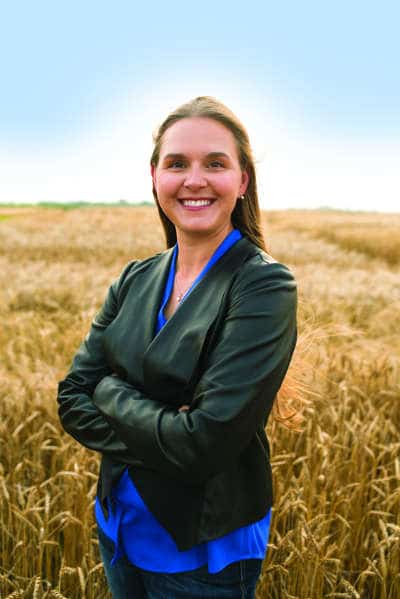Life can be stressful for business owners wanting to retire. David Rourke and Dana Maxwell’s approach to succession planning is a good model to follow to help you look ahead.
At 61, David Rourke is a busy man with a rock-solid work ethic and huge dreams. What else can you say about someone who founded Ag-Quest, which has become a major provider of agricultural research services in Canada?
Rourke started the business in Minto, Man., in 1983, as a way of paying the bills while he worked to make a living from his true passion — farming. He was 27 at the time. His life was hectic, but full.
A year later, he was hospitalized for exhaustion. The stress of running Ag-Quest, farming and raising a family had obviously caught up to him.
“That made it clear to me I couldn’t do so much. I had to come up with a strategy of empowering people to leverage my ambitions,” he says.
The health scare got him on the road to succession planning. Even though he wasn’t quite 30 yet, he began the slow and meticulous process of preparing for the future.
He quickly learned how fraught with bumps and potholes that road often is.
“We tried bringing some people in from outside to help with things, but we never had much luck with that as far as senior management roles went. So I decided to pick people from inside, give them some more training and direction, and they always responded very well. I learned early that your employees are your biggest asset.”
Fast-forward to today, and Rourke has been able to step away from the day-to-day challenges of running Ag-Quest to pursue other interests, including farming. He’s done this by utilizing one of his biggest assets of all — his daughter, Dana Maxwell.
Now 35, Maxwell serves as president and chief executive officer of Ag-Quest, still based in Minto. In her role, she oversees a staff of 23 research associates. The company offers contract agricultural research services in the areas of variety, plant breeding and confined field trials; efficacy; environmental fate; and herbicide resistance testing.
Although she finds herself in charge of running the sizeable ship that is Ag-Quest, her role as leader has come after a lot of hard work and effort to effectively take the reins from her father and prove to herself that she could succeed him.
She started work there in 2009 as director of plant genetic services after finishing a bachelor’s degree in agriculture (plant systems) from the University of Manitoba and a master’s in molecular biology at the University of Calgary. After a stint with Dow AgroSciences running field trials, she decided to come home to work in the family business.
“Honestly, I didn’t know how far my vision went at the time, but here I am many years later and I’ve taken over one of my family’s businesses. The two degrees I do have are a huge asset, but I’m still hoping to do my business degree eventually. It’s a bit surreal when I really sit back and think about it,” she says.

“My whole family has been hugely supportive, especially my mom — she’s always been very active in the research business, doing all the accounting for both Ag-Quest and the farm. She was the primary combine operator for a long time. You might say she’s always been one of the hardest workers around here.”
Maxwell and Rourke are now co-owners of Ag-Quest (Rourke has retained some shares so there would be flexibility to bring others into the business if Maxwell wanted/needed partners), and theirs is a story of how well the succession planning process can work.
“Succession planning has been talked about for a decade or more now. It’s gone from being a buzzword to a concrete concept that offers people an opportunity to understand what it really means and the steps involved,” says John Guthrie, business adviser at MNP in Brandon, Man.
He worked with Rourke and Maxwell to craft their succession plan, helping them look at several different ownership structures, management models and payment structures before finally settling on their current model, recognizing that it may need to change in the future at some point.
“There’s a lot of confusion out there as to what succession means, and that’s because there are so many components to it,” Guthrie adds.
Having been through the process, Rourke and Maxwell are able to offer some solid advice for others looking to wade through the waters of succession planning.
Know What You Want
It might seem like common sense, but having a clear goal is essential. Maxwell says that fairness across the family was a major consideration in how they structured things, and getting those basic questions dealt with was a major priority.
“Valuation of the company was an incredible challenge. There are no comparison metrics, like there would be for selling a restaurant or a farm or an agri-retail outlet,” Maxwell says.
“What is a fair multiple of EBITDA (earnings before interest, tax, depreciation and amortization) for a market value? If you approach it as the value of physical assets, what is the value of a mid-80s Wintersteiger combine? How do you value the goodwill of your client list? I would say that the valuation was our second biggest challenge, after coming up with the right management model.”
Get Out Now, or Get Out Later?
If you’re a business owner looking to retire or get out of the business to pursue something else, you have to decide early on whether you want to sell and be done with it, or engage in the long-term process of guiding the business as you carefully pass it on. Selling it quickly may not pay off as much as you think, Maxwell adds.
“If you just want to walk away and be free, you won’t get as much for the business you’ve spent a long time building. This process can have very long payout, and that takes patience. I’m my dad’s retirement plan, in a way. He’s not sitting around waiting for his pension to pay out.”
Choosing to take the longer road to succession planning can be more fulfilling and lucrative, but comes with its own challenges as well. Having two people running a business that used to be overseen by one person can lead to some disagreements, Guthrie says, so it’s important to have a formal plan in place.
“You look at Dana and David’s situation — under what terms is she going to make decisions? How will David make decisions? Those were questions they had to ask themselves, and I think that’s the foundation of their success to this point — the fact they tackled those questions head-on. They started with an appropriate time frame in mind, talked about the difficult issues, and came up with written working agreements that dealt with that.”
If you don’t have family or staff who want to take a leadership role, then you need to look at external buyers, Maxwell notes.
“That might mean people within the industry, or larger entities that are looking to purchase the business. Think carefully about what’s best for your staff and clients. Not all clients are interested in dealing with larger entities.”
Start Early
One of the biggest mistakes Guthrie sees people make is not starting the succession planning process early enough.

“The reason people procrastinate is because succession planning is hard, and no two plans are alike. It requires the use of tools to come up with a plan that works for the family who is involved with selling the business and the family acquiring the business,” he says.
Such tools are becoming more common, Guthrie notes, and offer owner-managers and large organizations the means to successfully exit their business on their own terms through careful planning.
“If you didn’t start to plan until you were 65 and when you’re 66 you want to be out of it, you may have a hard time finding the right buyer,” Guthrie says. “If you start at 60, and find a buyer when you’re 61 and say ‚ÄòI’m willing to work for another two or three years to ease the transition,’ then you’d be able to meet your goals of not having to show up at the office every day anymore.”
Look Internally
Rourke made a smart move in promoting internal staff to leadership roles, notes family friend Steve West, who operates Arizona’s RD4AG, which often collaborates with Ag-Quest to do seasonal research trials. Looking internally can ultimately make succession planning a lot easier, he says.

“David tends to have a dominant personality, as most of us in this line of work do, and you don’t want two heads on the serpent. Having Dana step in and run things has worked well, and I think there’s definitely lessons to be learned there,” West says.
“In these small companies like ours, the work is a labour of love — and finding someone else who’s excited about it and interested in carrying the business forward is hard. Typically, family is a place where that can stem from.”
David agrees, and says it’s important to focus on the strengths of others and actively think about why they might be good candidates to take over the business after you’ve had enough.
“I’m maybe more entrepreneurial than Dana, but she’s more management-oriented than I ever was. My role is largely over and hers is just beginning. She’s going to take the business in a whole new direction” Rourke says.
Plus, there is such a thing as overstaying your welcome, he adds.
“Henry Ford is a good example. He was innovative and successful, but after awhile he became an impediment to the Ford Motor Company and his own son, who was taking over the company at the time. He should have got out of it a lot earlier than he did.”
One of the challenges Maxwell says she faces is initiating a timely discussion of her vision for her employees’ careers. It’s something she constantly makes an effort to do, when the time is right.
“I don’t want to be in the position of thinking, ‚ÄòOh no, so-and-so is retiring in six months and I don’t know what I’m doing to do to fill their shoes.’ We want to identify and develop people to fill those roles. Don’t wait too long to have that discussion, because they might end up leaving for other opportunities, when had they known you had a vision for their future with the company, they might very well have stayed.”
Maxwell adds that she hopes to be succeeded by a third generation of her family someday.
“I want to see the business continue for the long-term, and I see a role for Ag-Quest in the industry for a very long time.”










